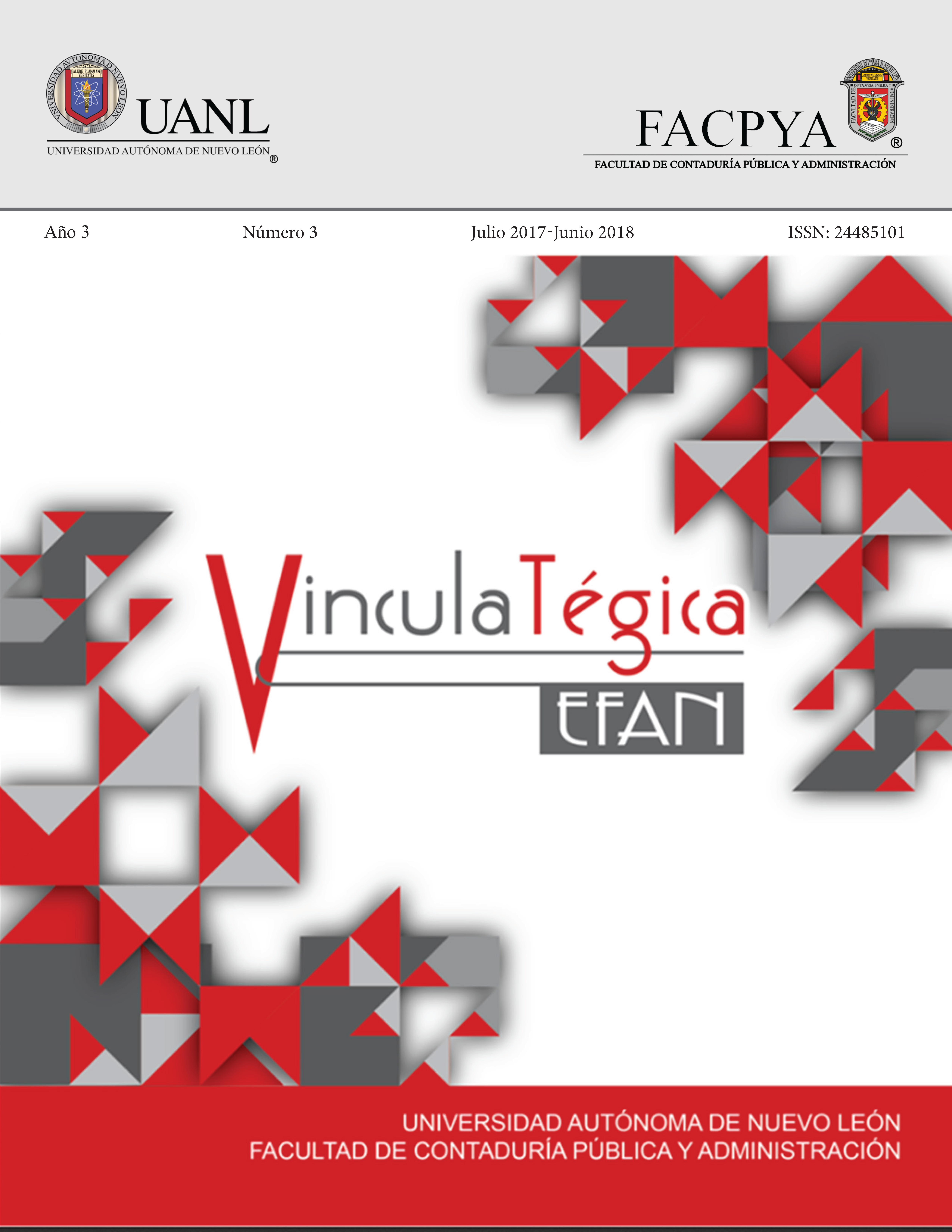El rol del docente ante un ambiente innovador de aprendizaje en escuelas y facultades de negocios. El caso de la: Facultad de Administración y Contaduría
DOI:
https://doi.org/10.29105/vtga3.3-1074Keywords:
Innovation, learning environment, technology, teachersAbstract
The present research describes the factors that influence students and teachers in an innovative learning environment focused on business discipline. For the development of this research was implemented the measurement instrument called questionnaire to obtain data on learning environments and the role of the teacher. Once the results were obtained, the necessary recommendations were made to the academic department for the resolution of said problem to raise and maintain the enrollment that semester and semester put their trust in the Faculty that is the object of the present investigation.
Downloads
References
Álvarez, Isaías y Topete, Carlos (1997), “Modelo para una evaluación integral de las políticas sobre gestión de calidad en educación superior” en Gestión y Estrategia No. 1112, enero- diciembre. UAM-Azcapotzalco.
ANUIES (2004). Documento estratégico para la Innovación en la Educación Superior. México. Área Moreira, Manuel. (2004). Los medios de enseñanza: conceptualización y tipología.
Badia, A. (2006). Ayuda al aprendizaje con tecnología en la educación superior. Revista de Universidad y Sociedad del Conocimiento, vol. 3, núm. 2, pp. 5- 19.
Bautista, A. (2007, mayo-agosto). Alfabetización tecnológica multimodal e intercultural. Revista Educación, núm. 343, pp. 589-600.
Buzón, O. (2005). La incorporación de plataformas virtuales a la enseñanza: una experiencia de formación on-line basada en competencias. Revista Latinoamericana de Tecnología Educativa, vol. 4, núm. 1, pp. 77-98.
Cabero Almenara, Julio, (2001). Tecnología Educativa, Diseño y utilización de medios en la enseñanza. España: Paidós.
Coll, C., Rochera, M., Mayordomo, R. y Naranjo, M. (2007). Evaluación continua y ayuda al aprendizaje. Análisis de una experiencia de innovación en educación superior con apoyo de las TIC. Revista Electrónica de Investigación Psicoeducativa, 5(3), 783-804.
Dawes, R.M. (1975). Fundamentos y técnicas de medición de actitudes. México: Limusa.
Díaz Barriga, Á. (2005). El profesor de educación superior frente a las demandas de los nuevos debates educativos. Perfiles educativos, 27(108), 9-30.
Farías Martínez, G. M. (2010). Espacios de aprendizaje en educación superior: de la profesionalización a la innovación para la transformación social. Revista Apertura, 2(2).
Ferreiro Gravié, Ramón. (1999). Hacia “nuevos ambientes de aprendizaje”, AMECDF IPN.
Fregoso Iglesias, Emma Margarita, (2000), Educación no formal, educación para el cambio, México: UNAMPraxis.
Guitert, M.; Romeu, T. y Pérez-Mateo, M. (2007). Competencias TIC y trabajo en equipo en entornos virtuales. Revista de Universidad y Sociedad del Conocimiento, vol. 4, núm. 1, pp. 1-12.
Kolis, M., & Dunlap, W. P. (2004). The Knowledge of Teaching: The K3P3 Model. Reading Improvement, 41(2), 97.
Moreno Olivos, T. (2009). Competencias en Educación Superior: un alto en el camino para revisar la ruta del viaje. Perfiles Educativos, vol. XXXI, núm.124, pp. 69-92.
Schober, B.; Wagner, P.; Reimann, R. et al. (2008). Vienna E-Lecturing: Learning how to learn self-regulated in an Internet-Based Blended Learning Setting. International Journal on ELearning, vol. 7, núm. 4, pp. 703-723
Tedesco, Juan Carlos (2004). Educar en la sociedad del conocimiento. Argentina: Fondo de Cultura Económica.
Downloads
Published
How to Cite
Issue
Section
License

This work is licensed under a Creative Commons Attribution 4.0 International License.
a). Authors keep copyright and give the journal the right of the first publication of the work under a Creative Commons attribution license. This license allows others to share the work as long as original authorship and initial publication in this journal is acknowledged.
b). Authors may make other independent and additional contractual agreements for the non-exclusive distribution of the version of the article published in this journal (e.g., include it in an institutional repository or publish it in a book) as long as they clearly indicate that the work was published for the first time in this journal.







